Indesign Editorial Director Paul McGillick embarks on an exploration of Creative Cities in Germany and Denmark.
July 12th, 2010
Thanks to the German Federal Government Office and the Danish Ministry of Foreign Affairs I have been briefly an editor-at-large, dipping into that vast pool we call ‘creativity’. In particular, I had the opportunity to sample the smorgasbord – quite literally at a few lunches in Copenhagen – of creativity in Germany and Denmark from architecture to food, from museums to products, from motor cars to bicycles.
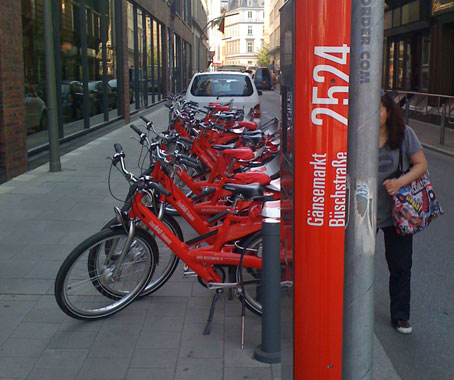
Hamburg’s Bike Stations
I once heard a prominent Australian architect imitate vomiting at the mention of Sydney Lord Mayor, Clover Moore’s plan to prioritise bicycles in Sydney. Well, one third of Berliners now use bicycles to get around and that figures is rising by 8% a year. In Hamburg, my group of fellow journos availed ourselves of bikes from one of Hamburg’s 71 bike stations for a truly wonderful circumnavigation of the lake.
Likewise, in Copenhagen for a token returnable deposit you can pick up a bike, use it and leave it at another bike station. That’s something to think about – not to mention Copenhagen’s driverless, virtually silent metro trains which run every three minutes!
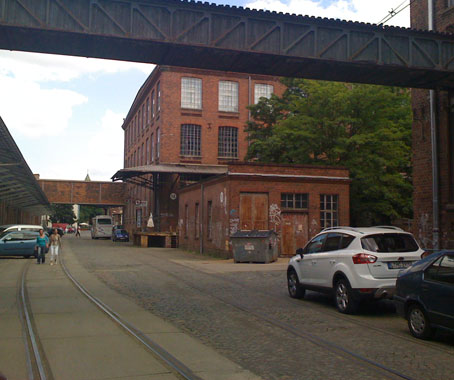
Leipzig’s Spinnerei
Cities like Berlin and Copenhagen have always been creative. Likewise, the former merchant city of Leipzig, now emerging from the dead sea of the communist era into re-inventing itself as a creative city. The Spinnerei symbolises this.
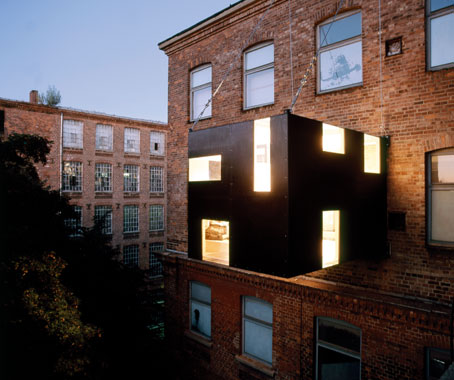
Built to last in the 19th Century with one metre thick brick walls, this former cotton mill is a ‘bottom-up development’.
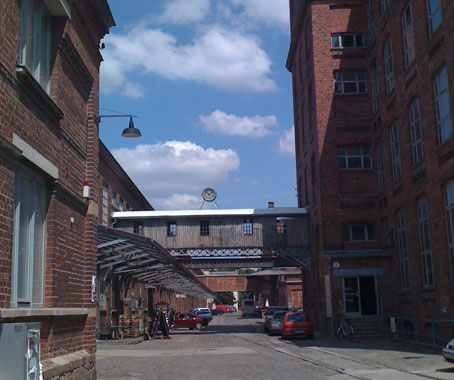
In a depressed real estate market, the owner simply let people move in and look after the buildings. Now it is an astonishing complex of artist, designer and performance studios plus up-market galleries with some of Germany’s leading artists such a Neo Rauch, Christiane Baumgartner and Matthias Weischer.
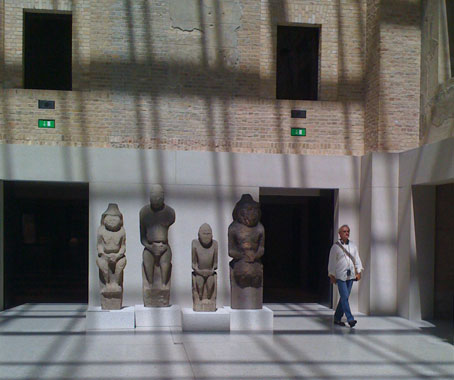
David Chipperfield’s Neue Gallerie in Berlin
Creative re-engagement with the past is also a feature of David Chipperfield’s sublime re-build of the Neues Museun in Berlin (holding antiquities) on the Island of the Five Museums. Chipperfield retained the ‘ruin’ from the wartime bombing and merged it with the new structure with a virtuoso palette of concrete.
We had the privilege of being guided through the building by Gabriele von Kardorff who designed the lighting – another virtuoso act blending natural and artificial light exemplified by the Egyptian courtyard (with its diffused glass ceiling) and the Greek courtyard (with its clear glass ceiling). Opened just last October, you could spend a week just looking at the famous head of Nefertiti, reincarnated here by the sophisticated lighting design.
If you think you know all about graphic design, you need to meet Berlin-based Erik Spiekermann. “We design brand experiences,” he says, and talks of “the power and the benefit of brand design”. But Spiekermann works in another stratosphere to your usual branding wackers.
A clue to this lies in his dismissal of focus groups: “Don’t ask people about what they don’t know.” Spiekermann tells us that the creative industries represent 3% of German GDP, employing 1.5 million people. And he helps to explain why Berlin is so creative – very affordable and a very liberated city where there are no class barriers, no hierarchy and everyone is free to do what they want.
I recall urbanist, Charles Landry, describing Australian cities as cities of ‘no’ – no, you can’t do this, no you can’t do that. Well, Berlin is the city of ‘yes’.
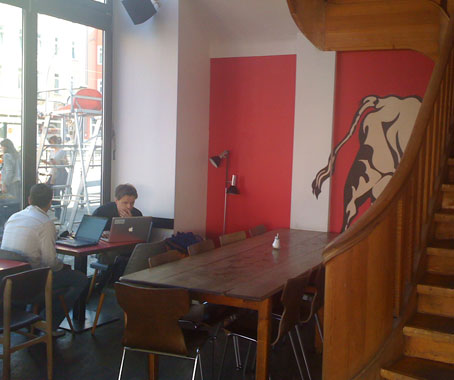
An internet cafe with a difference in Berlin
Even the internet cafes are different here. Sankt Oberholz, for example (made famous in Döblin’s classic novel Berlin Alexanderplatz), is not just a café with internet. It is an alternative workspace, reflecting the changing work patterns of the 21st Century.
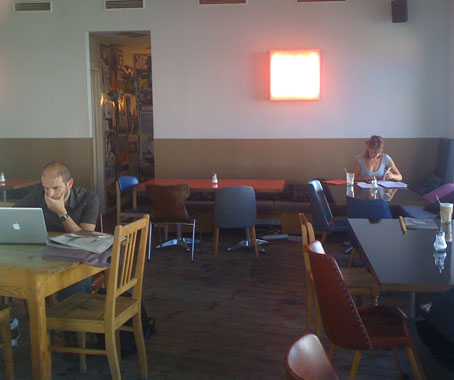
Berlin has always been a place of extremes. Hence, dinner, dancing and the World Cup at Clärchensballhaus (a splendid, rambling, slightly raffish villa with inside and outside eating) and a visit to the architecturally stunning Nordic Embassy compound where the five Scandinavian countries share a site and show off their design credentials.
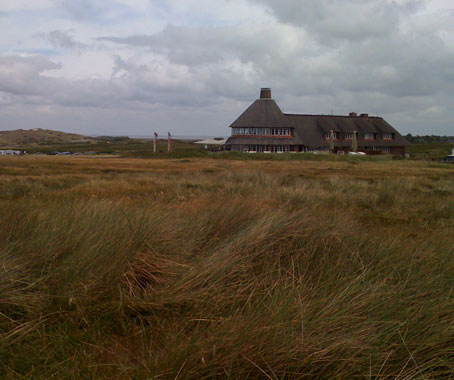
The island of Sylt
But it was on to Hamburg and then to the island of Sylt with the phrase “Marketing is about making money, design is about how to make a better life” ringing in my ears.
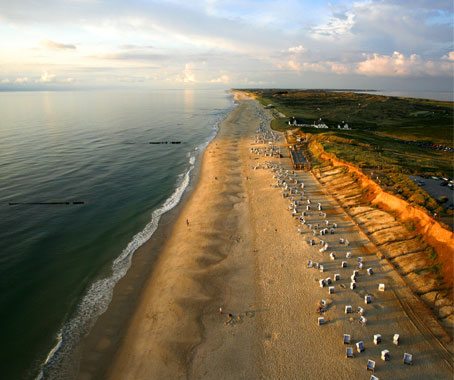
Now, Sylt is something special with its dramatic North Sea maritime landscape.
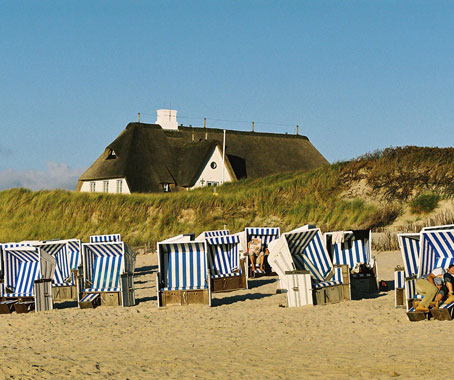
Once a retreat for artists and writers, it is now a favourite destination of the wealthy and the famous – as well as home to Germany’s oyster industry which we inspected first-hand in our gum boots sticking in the mudflats.
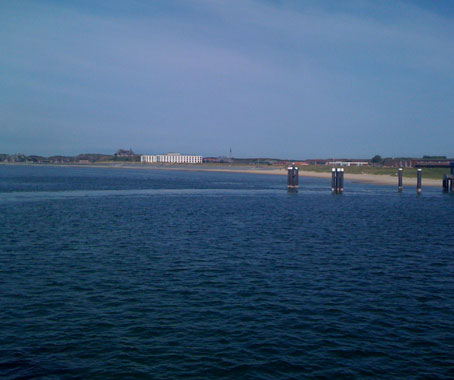
But Sylt keeps its character – including its mandated thatched roves – while its artistic legacy is maintained at the Sylt Quelle Arts Foundation, a classy exhibition and restaurant space with artists’ studios and outdoor sculptures (including one by Australian, Richard Tipping).
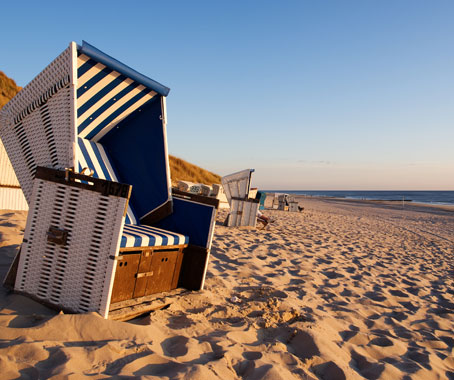
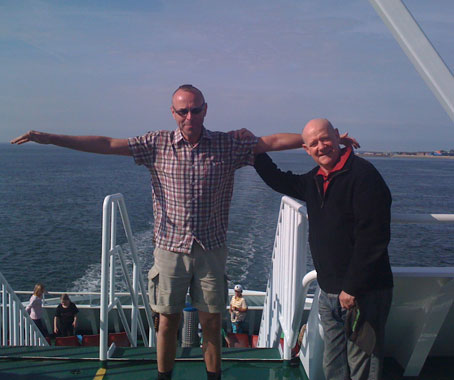
By water to Denmark
By ferry to Denmark, first stop Tønder and its marvelous Kunstmuseet which won the 2010 Danish Museum Prize for its blending of old and new spaces. Tønder is Hans Wegner’s home town and the shipping magnate, A.P.Møller, funded the restoration of the museum’s tower which is now a Wegner museum where, as you make your way up the nine levels, you can actually enjoy sitting in all of Wegner’s classic chairs before enjoying sweeping views of the town from the top.
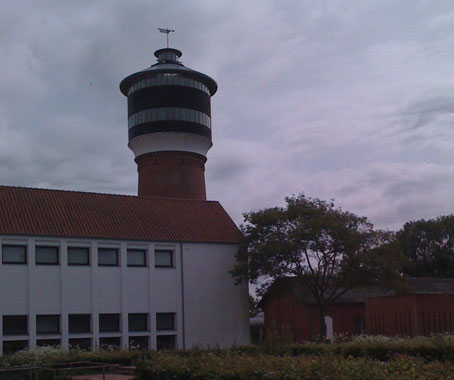
Danish Design Centre
Denmark is the home of ‘quiet products’ – the ones which ‘don’t make a fuss about themselves’. Makes a change from all the noise of international design-as-fashion. And summed up by the modest, but beautifully designed (by Henning Larsen, who also designed the imposing new opera house) Danish Design Centre.
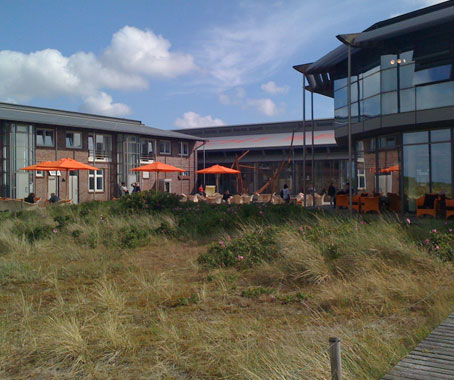
Here they have gone well beyond simply exhibiting design. As with the Swedish Industrial Design Association, the aim is to promote the economic benefits of design and design as an enabler of innovation. The Centre plays a ‘branding role’ (through traveling exhibitions), but is also a knowledge centre and acts as a facilitator, “building bridges between business and designers”. Its current exhibition, 10+Design Forecast, is in three parts asking three questions: What is good design, what is the design process and how is design currently acting as a driver of change?
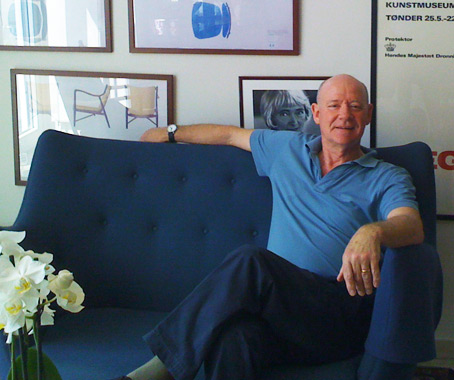
Superbly conceived and realised, the exhibition is a model of the very thing it is illustrating.
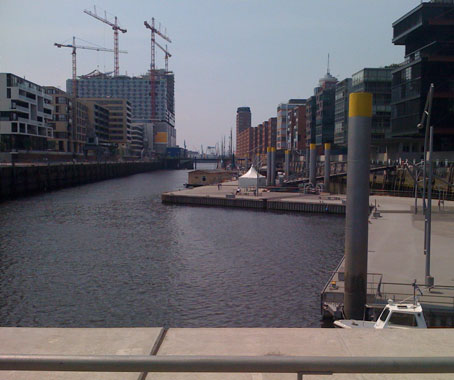
The development of Copenhagen’s docks
In Denmark, design is a way of life – which is really just another way of saying they prioritise quality of life over everything else.
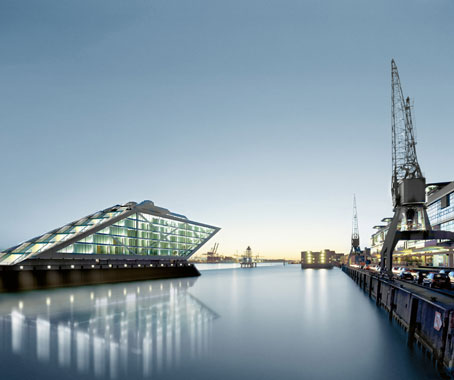
Like Hamburg with its Hafencity (the re-development of the docks area), Copenhagen’s docks are also slowly transforming.
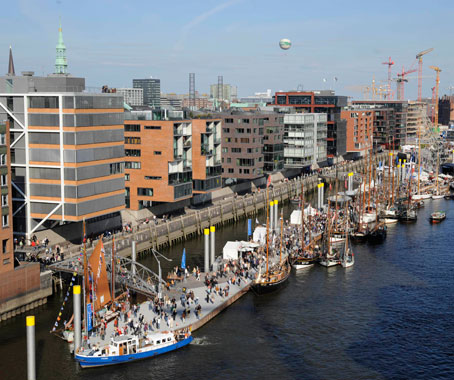
An intriguing example is P48 (the ‘p’ stands for pakhus, or warehouse) where a linked cluster of non-competing, complementary showrooms (Fritz Hansen, Luceplan, Kvadrat, Vola, Montana, Erik Jørgensen) share an elegantly refurbished warehouse.
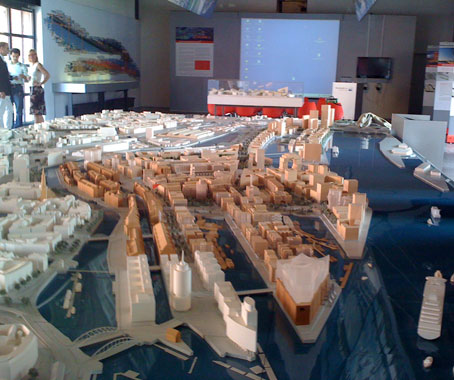
A unique housing development at Ørestad
On the outskirts of Copenhagen at Ørestad there is an extraordinary new housing development, each building architecturally unique and no less than 71 plan-types on offer.
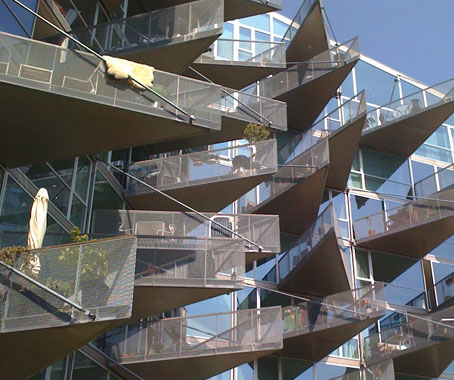
These are mixed in with commercial buildings on a site which is less than 30 minutes by one of those driverless metro trains from downtown Copenhagen in a semi-rural setting.
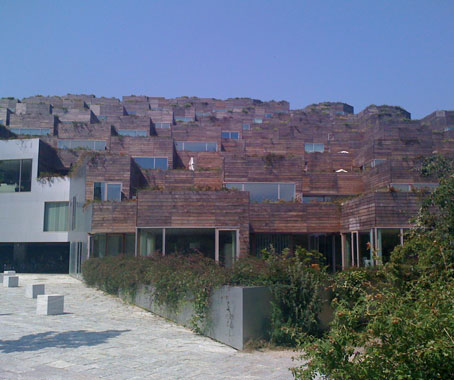
So, that’s my report – with heaps left out, including the great team of fellow journos from all over the world who bonded quickly over many beers, World Cup mania and a common enthusiasm for architecture, art and design.
Paul McGillick
Editorial Director, Indesign Publishing
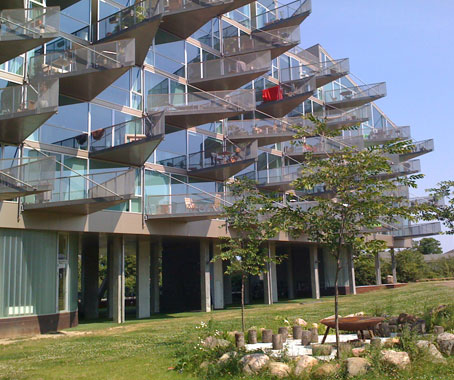
INDESIGN is on instagram
Follow @indesignlive
A searchable and comprehensive guide for specifying leading products and their suppliers
Keep up to date with the latest and greatest from our industry BFF's!

Welcomed to the Australian design scene in 2024, Kokuyo is set to redefine collaboration, bringing its unique blend of colour and function to individuals and corporations, designed to be used Any Way!
The new range features slabs with warm, earthy palettes that lend a sense of organic luxury to every space.
The Australian Achievement In Architecture Awards take the personal approach

The three-year design research partnership launched by McGregor Coxall and RMIT’s Yulendj Weelam Lab embarks on a mission to transform Australia’s built environment by weaving in First Nations wisdom, embracing sustainable practices, and fostering a sense of belonging.
The internet never sleeps! Here's the stuff you might have missed
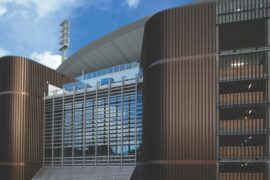
With the Evershield® Anodising 50-Year Warranty, AAF offers peace of mind that architectural aluminium will remain vibrant, resilient, and beautiful for generations.
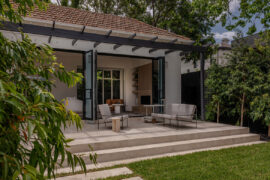
Through experience and with a passion for great design, Biasol is making gentle and perfect waves on the landscape of design.